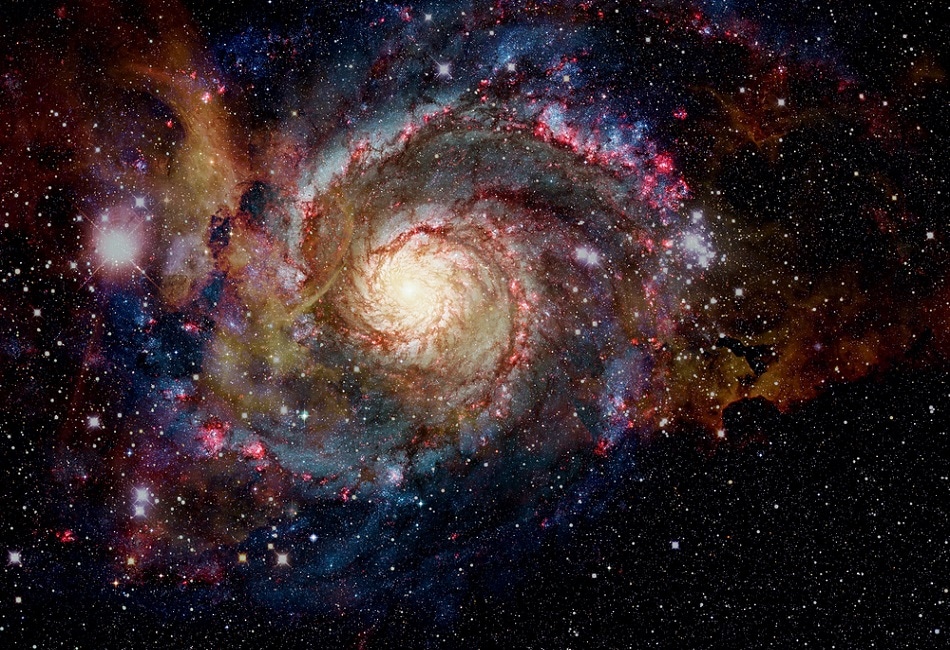Aug 1 2017
Extinguished stars are abundantly present in some of the largest galaxies in the universe. But shortly after the universe was first created - almost 12 billion years ago - these huge galaxies were hotspots that produced billions of stars.
 NASAImages/ Shutterstock.com
NASAImages/ Shutterstock.com
However, it has been a long-standing mystery on how these kinds of cosmic realms, referred to as dusty starburst galaxies, turned out to be galactic dead zones. Observations suggest quasars may starve galaxies of energy needed to form stars
At the University of Iowa, Astronomers provided a clue to this mystery in a new study featured in the Astrophysical Journal. According to them, quasars may be responsible for why certain dusty starburst galaxies stopped brewing up stars. Quasars are intense energy sources that are believed to exist deep within the galaxies.
This latest study could shed light on how massive galaxies change from star makers to cosmic cemeteries and how these changes are driven by various phenomena — for example supermassive black holes and quasars that are believed to dwell at the core of all galaxies, which are still a mystery to Researchers.
The Researchers located the quasars within the four dusty starburst galaxies that are still making stars and ultimately arrived at their proposed theory.
These quasars may play an important role in making the dusty starbursts extinct in the cosmic history. This is because quasars are energetic enough to eject gas out of the galaxy, and gas is the fuel for star formation, so quasars provide a viable mechanism to explain the transition between a starburst and an extinct elliptical (galaxy).
Hai Fu, the Paper’s First Author and Assistant Professor in the UI’s Department of Physics and Astronomy
Fu informed that powerful star-forming activity continuously occurs in dusty starburst galaxies, churning up grit. This grit, in turn, either absorbs or blocks the quasars’ light and makes them undetectable in these galaxies.
“So, the fact that we saw any such quasars implies that there must be more quasars hidden in dusty starbursts,” Fu says. “To push this to the extreme, maybe every dusty starburst galaxy hosts a quasar and we just cannot see the quasars.”
In March 2016, the Researchers located the quasars with the help of Atacama Large Millimeter/submillimeter Array (ALMA), a range of radio telescopes that were placed over 16,000 feet above the sea level in northern Chile. That was the first time the research team recorded time on ALMA, which was brought into full operation in the year 2013 and was supported by international partners, including the U.S. National Science Foundation.
Using other telescopes, the Researchers eventually mapped the quasars at wavelengths that ranged from ultraviolet to far infrared. On the basis of these observations, the team demonstrated that the quasars are the same as the quasars located with ALMA. However, the question then became: Why are these quasars visible when they should be enshrouded?
Fu and his team have an explanation for this. According to them, the quasars peek out from deep holes within the galaxies. These holes are debris-less vacuums that permit light to escape in the middle of the cloudy surroundings. So far, Scientists are not clear about the particular shape of these galaxies and even ALMA is not that powerful to give a clear glimpse of the cosmos regions, where the light that is being detected was produced 12 billion years ago, i.e., when the universe was roughly about one-seventh its present age.
However, Fu and his team believe that the galaxies may be in the shape of the doughnut and oriented in a way that their holes, and therefore the quasar, can be observed.
It’s a rare case of geometry lining up. And that hole happens to be aligned with our line of sight.
Jacob Isbell, the Paper’s Second Author and a UI Senior from Garrison, Iowa
The research team now believes that majority of quasars within the dusty starburst galaxies cannot be observed because they are oriented in such a way that they are completely hidden. Yet, locating four cases of dusty starburst galaxies with visible quasars does not appear to be a one-off case, but points to the presence of more quasars in the galaxies.
The paper is titled, “The circumgalactic medium of submillimeter galaxies. II. Unobscured QSOS within dusty starbursts and QSO sightlines with impact parameters below 100 kiloparsec.”
Other Authors who contributed in this study were Caitlin Casey from the University of Texas at Austin; J. Xavier Prochaska from the University of California, Santa Cruz; Asantha Cooray at the University of California, Irvine; Alan Stockton from the University of Hawaii; and Nick Scoville from the California Institute of Technology.
The work was funded by the National Radio Astronomy Observatory, an NSF facility; NASA; and the University of Iowa.